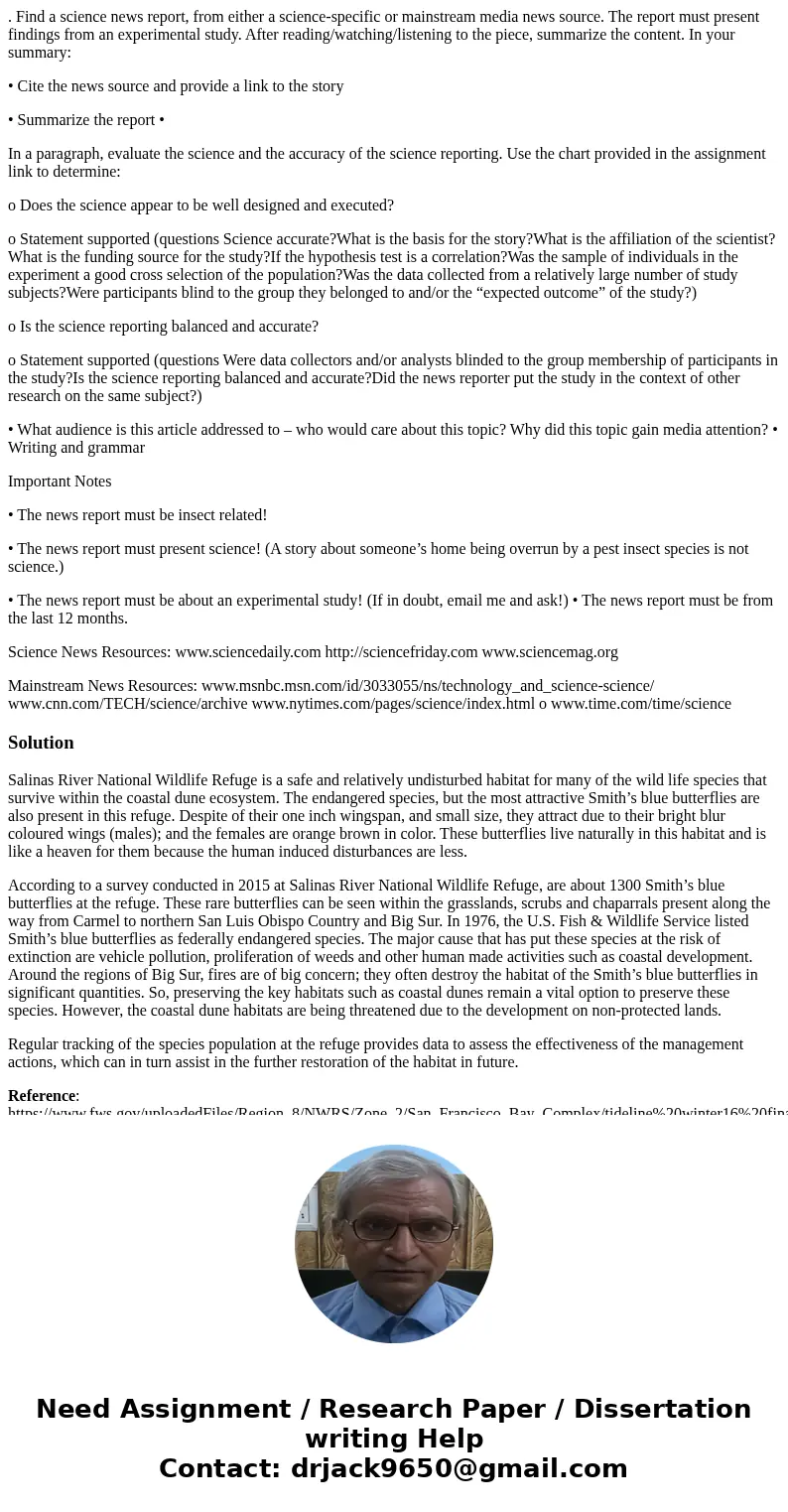Find a science news report from either a sciencespecific or
. Find a science news report, from either a science-specific or mainstream media news source. The report must present findings from an experimental study. After reading/watching/listening to the piece, summarize the content. In your summary:
• Cite the news source and provide a link to the story
• Summarize the report •
In a paragraph, evaluate the science and the accuracy of the science reporting. Use the chart provided in the assignment link to determine:
o Does the science appear to be well designed and executed?
o Statement supported (questions Science accurate?What is the basis for the story?What is the affiliation of the scientist?What is the funding source for the study?If the hypothesis test is a correlation?Was the sample of individuals in the experiment a good cross selection of the population?Was the data collected from a relatively large number of study subjects?Were participants blind to the group they belonged to and/or the “expected outcome” of the study?)
o Is the science reporting balanced and accurate?
o Statement supported (questions Were data collectors and/or analysts blinded to the group membership of participants in the study?Is the science reporting balanced and accurate?Did the news reporter put the study in the context of other research on the same subject?)
• What audience is this article addressed to – who would care about this topic? Why did this topic gain media attention? • Writing and grammar
Important Notes
• The news report must be insect related!
• The news report must present science! (A story about someone’s home being overrun by a pest insect species is not science.)
• The news report must be about an experimental study! (If in doubt, email me and ask!) • The news report must be from the last 12 months.
Science News Resources: www.sciencedaily.com http://sciencefriday.com www.sciencemag.org
Mainstream News Resources: www.msnbc.msn.com/id/3033055/ns/technology_and_science-science/ www.cnn.com/TECH/science/archive www.nytimes.com/pages/science/index.html o www.time.com/time/science
Solution
Salinas River National Wildlife Refuge is a safe and relatively undisturbed habitat for many of the wild life species that survive within the coastal dune ecosystem. The endangered species, but the most attractive Smith’s blue butterflies are also present in this refuge. Despite of their one inch wingspan, and small size, they attract due to their bright blur coloured wings (males); and the females are orange brown in color. These butterflies live naturally in this habitat and is like a heaven for them because the human induced disturbances are less.
According to a survey conducted in 2015 at Salinas River National Wildlife Refuge, are about 1300 Smith’s blue butterflies at the refuge. These rare butterflies can be seen within the grasslands, scrubs and chaparrals present along the way from Carmel to northern San Luis Obispo Country and Big Sur. In 1976, the U.S. Fish & Wildlife Service listed Smith’s blue butterflies as federally endangered species. The major cause that has put these species at the risk of extinction are vehicle pollution, proliferation of weeds and other human made activities such as coastal development. Around the regions of Big Sur, fires are of big concern; they often destroy the habitat of the Smith’s blue butterflies in significant quantities. So, preserving the key habitats such as coastal dunes remain a vital option to preserve these species. However, the coastal dune habitats are being threatened due to the development on non-protected lands.
Regular tracking of the species population at the refuge provides data to assess the effectiveness of the management actions, which can in turn assist in the further restoration of the habitat in future.
Reference: https://www.fws.gov/uploadedFiles/Region_8/NWRS/Zone_2/San_Francisco_Bay_Complex/tideline%20winter16%20final.pdf

 Homework Sourse
Homework Sourse